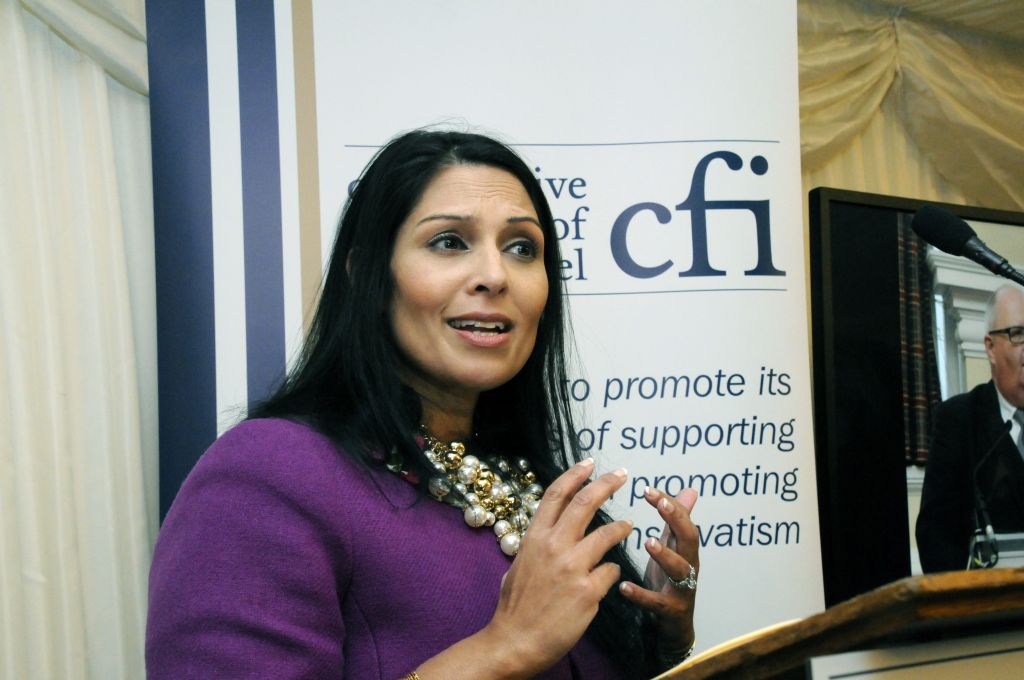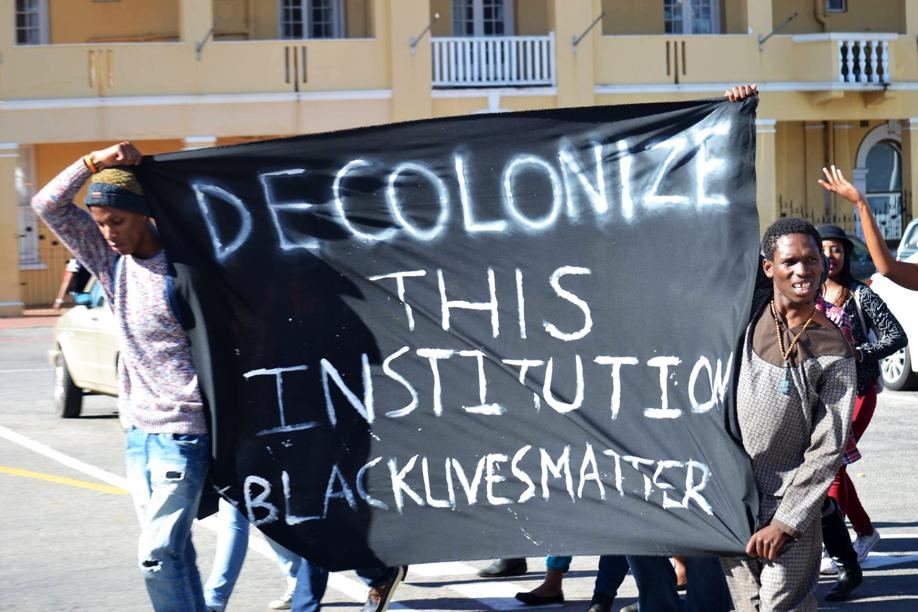Civic nationalism — the idea that a nation is little more than an abstract set of ideas and not a group of people bound by blood. The idea that anybody, anywhere, can one day become an American. The idea that America is a homeland for all, and that we are all immigrants. The idea that if you replace the founding stock of the US, or any Western nation for that matter, with alien migrants, so long as the ideas remain, so too will the nation.
Civic nationalism: perhaps the largest gamble of all time.
The principal fallacy of civic nationalism is that the American and European ideal can be taught to non-Europeans. The principles and ethics that made our civilization great arose from European DNA. It was no mistake and no magic dirt. There is a reason certain ideals and political forms appeared in the Occident and nowhere else through the world. There is a reason non-Whites do not accept the truths we hold to be self-evident.
We can look at hard data to support the idea that there are big differences between Whites and non-Whites on a wide range of issues, and in particular on the fundamental question of the proper role of government. Non-Whites are more likely to believe that government control is more important than individual rights. A 2015 study found that 50% of Hispanics and 62% of Blacks in the US support hate speech laws that would make it illegal to make offensive comments, compared to 36% of Whites that would support such legislation.
Pew Research asked the question “What do you think is more important — to protect the right of Americans to own guns, OR to control gun ownership?” 75% of Hispanics and 66% of Blacks felt that gun control was more important than protecting the right to own firearms. On the other hand, the majority of White Americans — 54% — answered that gun rights were more important than gun control. Sorted by party we see that 70% of Republicans, compared to 30% of Democrats answered that protecting gun rights was more important than gun control.
From these surveys we see very clearly that the ideas put forward in our Bill of Rights are upheld far more by the White majority than by Blacks or Hispanics. It is thus quite reasonable to think that neither the Constitution nor the Bill of Rights can survive a non-White majority. The Founders understood this type of high-trust nation that afforded individuals tremendous freedom was predicated upon a White society. The phrases “for ourselves and our posterity” of the Constitution and “free white persons of good moral character” from the Naturalization Act of 1790, are quite explicit in envisioning a White future for the U.S.
Non-Whites are also far more likely to favor a government that provides lots of free stuff. Pew asked if people would prefer “a smaller government providing fewer services or a bigger government providing more services.” The results were striking. Of Blacks, 68% reported they would prefer a larger government with more services, compared to 35% of Whites. First-generation Hispanics answered at a colossal 81%, second-generation Hispanics at 72%, third-generation and greater, 58%, thus showing continued divergence from White norms. Second-generation Hispanics are actually more likely to identify as Democrats than first-generation Hispanics — meaning that the Republican pipe dream that migrants will someday be just like them is not based in reality.
So it’s reasonable to think that the Constitution and the Bill of Rights will not survive a non-White majority. As it stands, the current greatest threat to fundamental liberties and our way of life as Americans is not an opposing ideology, but an unnatural shift in demography.
There is a common misunderstanding that policy, not population, determines the outcome of a city or of a nation. The neo-Marxists liberal policies of San Francisco are not all that different from Camden, New Jersey. The type of ideology that governs Portland, Oregon, is arguably quite similar to that of St. Louis. While San Francisco and Portland are relatively safe, clean, and functioning, Camden and St. Louis are among the most dangerous cities in the world. This is not a result of politics, but a result of population. Functioning societies, like the one our forefathers designed, were predicated upon a high-trust, high-IQ, and hard-working population.
The heart of civic nationalism is the idea that a nation is a proposition, that we as Americans, are nothing but a disparate group loosely bound by the Constitution is a laughable notion both in theory and in practice. In theory, it means that any of the world’s seven billion inhabitants are simply Americans that have not yet migrated here. It means so long as their paperwork is filled out properly and they “believe” in the same values the nation was founded upon, anybody can become an instant American. In practice, we see that the majority of non-Whites do not even meet the most minimal of standards of what it means to be an American. Per their own admission, most do not believe in some of our most foundational principles, the right to free speech, and the right to keep and bear arms. These very basic ideas are often ungraspable abstractions to the foreign mind. In a sense, this can be articulated to mean that the descendants of our nation’s founding stock are the only true Americans, all others are paper citizens, mere guests in a foreign land.
Expansive liberties and minimal government intervention are predicated upon a White population. The type of liberty we were granted requires a certain level of self-reliance and tenacity. These are things that cannot be taught to the global masses. Foreigners are never going to be all that interested in free speech, or limited taxation and limited governments, or in the right to own firearms, because none of these things are a part of their culture, as they are not part of their DNA. These Western values are not mere abstractions or propositions, they are things that only exist in the West because they come from the Western mind.
If we remove our shared culture, which stems from race, our shared history, and our shared traditions, we no longer have a nation. We are left with nothing but a multinational corporation inhabitant by deracinated, atomized, and amorphous proles, meandering through life without an identity except perhaps as the fan of a certain football team or the owner of a certain model of car.
***
My views are often confronted with questions such as, “what about minorities (non-Whites) that voted Trump?” and “what about migrants that do very well in the USA such as Indians and East Asians?” I always reply, “what about them?” Citing to Indians, East Asians, Blacks, or Hispanics that fall on the far end of the bell-curve in no way repudiates their collective ethnic groups, nor can they make amends for the significant drain their people pose to our nation.
“Based” Latinos that voted Trump and champion “legal” migration are not our our allies. Legal migration is a globalist fiction to convince the European peoples that so long as it was government-sanctioned, the invasion of our homelands is justified. If 200 million “legal” Mexicans come to the USA, does that somehow make it any better when we are forced to live in North Mexico? Not at all. The English became a minority in London through “legal” migration, mind you. What those “based” Latinos are really saying, is they want to come to our homeland, benefit from the society we created, and ensure the erasure is slow enough that they do not experience the detrimental effects.
The idea that “high-skilled” migrants should be allowed to come to the US or Europe to work or to get an education is equally as absurd both in theory and practice. Indians, Africans, and Asians coming to the US to obtain advanced degrees are seen by most as a wonderful thing, and it is far from it.
I was struck by the incredible irony when a friend of mine described her recent trip to Africa as a part of a Doctors Without Borders group, to provide humanitarian health care. I asked if the group that she went with was mostly White. She was at first struck by the question, as most people are when anybody speaks candidly about race. The truth is, the majority of people who travel to Africa, India, and Asia to provide humanitarian aid, are White. The irony is that the top African, Indian, and Asian students routinely flock to the US, leaving behind their own homeland, abandoning their own people, so they may earn more money in the states. The same people that are often used as examples of American “success stories” are not only displacing native-born White Americans in medical programs at universities thanks to diversity quotas, they are also exacerbating the problem in their home nations. They leave behind their own tribe, simply to make more money. Motivated by pure greed. And then, the shortage of medical professionals all over the third world is supplemented by altruistic Whites, when the people who should be offering free medical care in those nations left years before so they may enjoy the material trappings of a White nation, live in a White neighborhood, and send their children to White schools.
***
Civic nationalists believe in the Emma Lazarus-Israel Zangwill-Emmanuel Celler-Horace Kallen version of America — no surprise, because they and people like them created and promoted the idea throughout the twentieth century. They promote the image of America as a melting pot or, more recently the idea that non-Whites retain their ethnic identities. They have the bizarre idea that the Founding Fathers mutually pledged their “lives, fortunes, and sacred honor” to each other to create a “homeland for all”. By doing so, they explicitly reject the Founding Fathers view of what it means to be an American, as well as nearly 175 years of law that limited immigration to Europeans.
At best, civic nationalist are people who think that paying taxes, which most migrants do not do, and feigning belief in a set of values will make you an American. At worst these soft-globalists believe that the Mexican kid born in Texas after his 9-month pregnant mom jumped the border, is every bit as American as somebody whose family fought in the Revolution.
The end result of civic nationalism is White families, paying a third of their income in taxes, so they can feed, house, clothe, and educate a family of seven Somalis, which will have twice the voting power as the White family that funded them. Civic nationalism is an ideology that suggests Somalis that fly into JFK airport, are picked up by their HIAS representative, and driven to their newly furnished apartment, are just as American as the person whose family came here on a 50-day boat ride from England with a few pence in their pockets.
Nobody, not even the most ardent open-border, globalist, rootless Liberal, would honestly suggest that Japan or Israel is merely a set of ideas and beliefs. Japan is the homeland of the Japanese people and Israel is the Jewish state. This seems rather obvious. Yet the same axiomatic truism is entirely abandoned when it comes to European nations. Decades of multicultural propaganda, suicidal immigration policies, and a widespread cover-up by the media and political elites have convinced several generations of Europeans that our ancestral homelands, are in no way ours. We are being told that the nations our forefathers created, defended, and died for, belong just as much to us, as they do to any of the world’s seven billion people who manage to wash upon our shores.
So-called conservatives are still hopelessly holding onto Leftists platitudes, “we are a nation of immigrants” and “diversity is our greatest strength.” These platitudes claim that because Europeans once migrated to the US, after a nation was created specifically for Europeans, by Anglo-nationalists, that we should allow unlimited Third World migration.
Democrats understand very well that they will never convince Whites to pass “hate speech” laws. The only way is to import enough non-White voters to get their agenda in place. The Left understands this on a visceral level. They know with no doubt in their minds, that the way to recreate this nation in their image, is to alter the demographics and to eviscerate the founding stock. Anybody on the Right that believes in the idea of civic nationalism, or any other nationalism aside from ethnic-nationalism, is either willfully blind or at heart nothing but soft-globalists.
Everything in politics and policy — and I mean everything — falls in the end comes down to race. Everything else is really quite secondary. Nations can survive famine, communism, plagues, war, pestilence, but they cannot survive mass-migration.
Beliefs alone do not make up a nation. We are a people bound by history, culture, heritage, and blood. If we are replaced, if the founding stock of America, or any other European nation is replaced with those who are nothing but paper citizens, mere visitors, and welfare tourists, the nation dies alongside the founding stock.








